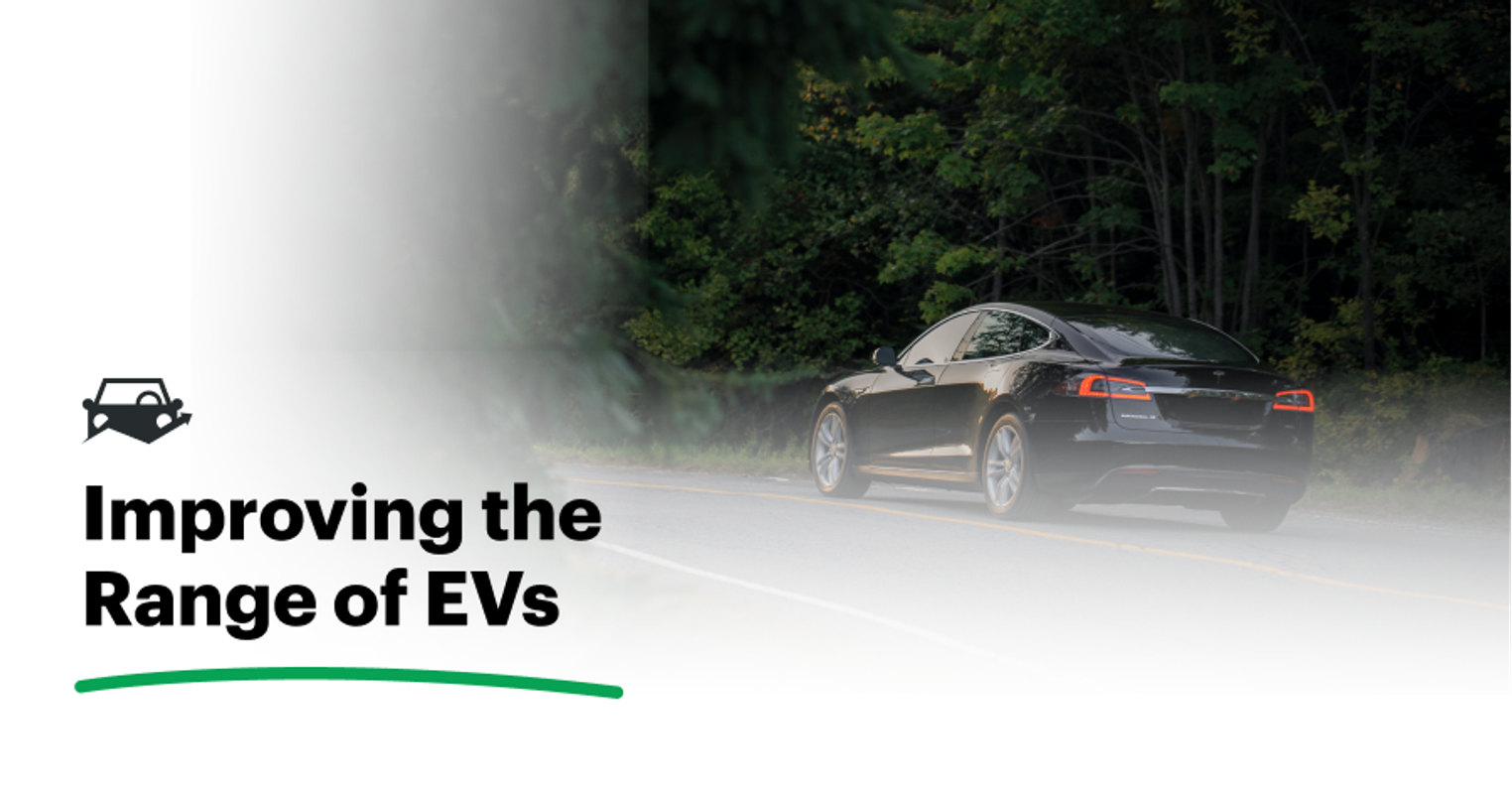How EV Innovations are Alleviating Range Anxiety
Jul 7, 2023
4 min read

Electric fleet vehicles have gained a greater foothold in the fleet industry in recent years, with more affordable models available to suit a wider variety of fleet needs. But range anxiety – the fear of running out of battery charge – can be a common adoption concern among some reluctant fleet managers , and with good reason.
Lack of sufficient charge on a vehicle, as well as more limited access to charging stations in the majority of the U.S., can lead to unnecessary non-mechanic downtime and impact the efficiency of a fleet operation.
Advancements in EV Technology
The good news is, advancements in EV technology are making significant strides in tempering this issue, with improved battery technology, charging speed and the availability of high-capacity vehicles. Let’s take a look at how EV evolutions are addressing range anxiety and ultimately increasing the viability of electric vehicle fleet management.
1. Battery Technology
One of the key factors influencing range anxiety is the limited capacity and range of EV batteries, but in the past few years, battery technology has seen remarkable progress in operational battery life. Many EVs rely on lithium-ion batteries, and while the capacity of those batteries has improved over time, researchers are exploring new solutions that will increase energy density and improve performance. Breakthroughs with technology like solid-state batteries and lithium-air batteries are poised to offer higher energy storage, faster charging times and increased durability in the future, effectively mitigating concerns related to range anxiety.
2. Fast Charging Infrastructure
Charging speeds play a vital role in alleviating range anxiety, as they determine the time required to recharge an EV battery and thus, the time a vehicle spends off the road. The establishment of a robust charging infrastructure has been instrumental in addressing this concern, and rapid advancements in fast-charging technology have significantly reduced charging times, making it more convenient for EV owners and EV-integrated fleets.
High-power charging stations, like Tesla’s Supercharger network, and other fast-charging networks, have revolutionized the charging experience, enabling drivers to replenish their battery levels quickly during long journeys. With more manufacturers adopting the North American Charging Standard and choosing to streamline their charging infrastructure to be compatible with Tesla’s network, fast charging is becoming more consistent and available on the road.
3. High-Capacity Vehicles
In the early days of EVs, most models were made by a handful of small producers and generally had an incredibly limited range, which made long-distance travel too challenging to be a feasible fleet-wide solution. But now, major automakers are rolling out their own electric vehicles with extended driving ranges that they hope can square up against their combustion engine models, expanding the options available to both consumers and fleets.
As resources for research and development have increased with the interest in EVs, these vehicles now have larger batteries and improved efficiency, enabling drivers to travel longer distances without worrying about running out of charge. And with the introduction of electric SUVs, pickups and commercial vehicles, companies are expanding the versatility of EVs, making them suitable for various applications and driving scenarios.
4. Battery Management Systems
Advanced battery management systems (BMS) have become an integral part of EV technology, optimizing battery performance by monitoring and regulating factors like temperature, voltage and state of charge. BMSs not only extend the lifespan of the battery but also ensure that the available energy is used efficiently to reduce energy waste and enhance range. With the continuous improvements in BMS technology, EVs are able to give range predictions more reliably and accurately, which means more confident drivers with less range anxiety.
5. Electric Vehicle Fleet Management
As electric fleet vehicles have become more commonplace, many fleet management systems have been at work to integrate more solutions specific to EVs in their platforms, making it simpler to track and automate inspections, work orders and maintenance tasks for EVs. EV fleet management software (FMS) can make it easier to track EV data by collecting that data automatically, linking with telematics devices, BMSs and other data sources to unify everything in one place, so you can maintain the same level of visibility in your fleet asset management as you can with a more traditional vehicle lineup.
Track and maintain all your assets in Fleetio!
Try it for freeFleet Electrification
The progress in EV technology is not only benefiting individual EV owners, but also paving the way for a sustainable shift in fleet operations. With the advent of electric commercial vehicles, such as delivery vans and buses, entire fleets can now operate on clean energy, reducing emissions and dependence on fossil fuels.
Fleet operators can leverage the advancements in battery technology, fast charging infrastructure and high-capacity vehicles to ensure uninterrupted operations and overcome range limitations. Transitioning to an electric fleet not only contributes to environmental preservation, but can also provide economic advantages through reduced maintenance and operating costs.
Need a solution for tracking your EV assets? Fleetio can help. Start your free trial or request a demo today.

Senior Fleet Content Specialist
As a Senior Fleet Content Specialist at Fleetio, Peyton explores the voices and experiences that shape fleet operations. She focuses on how fleet professionals adopt technology, improve efficiency and lead their teams to bring clarity and context to the challenges happening across the industry.
View articles by Peyton PanikReady to get started?
Join thousands of satisfied customers using Fleetio
Questions? Call us at 1-800-975-5304
Get Our Newsletter
Join a community of 70,000+ fleet industry professionals.
